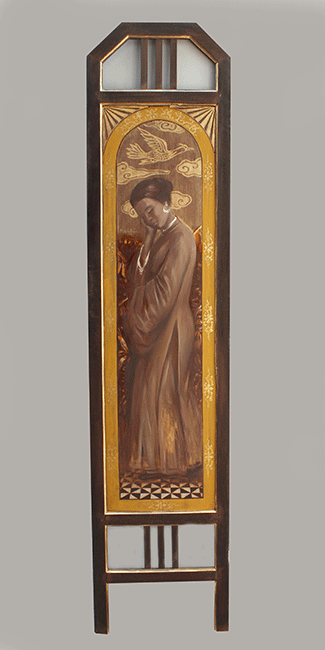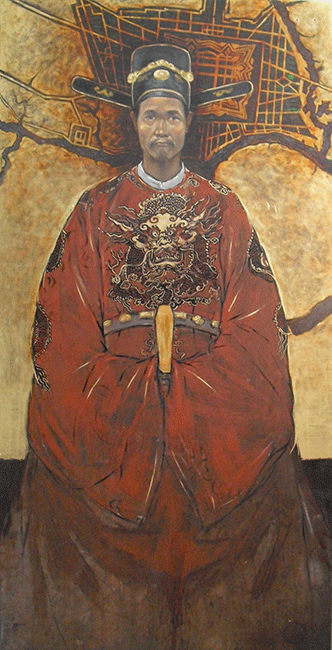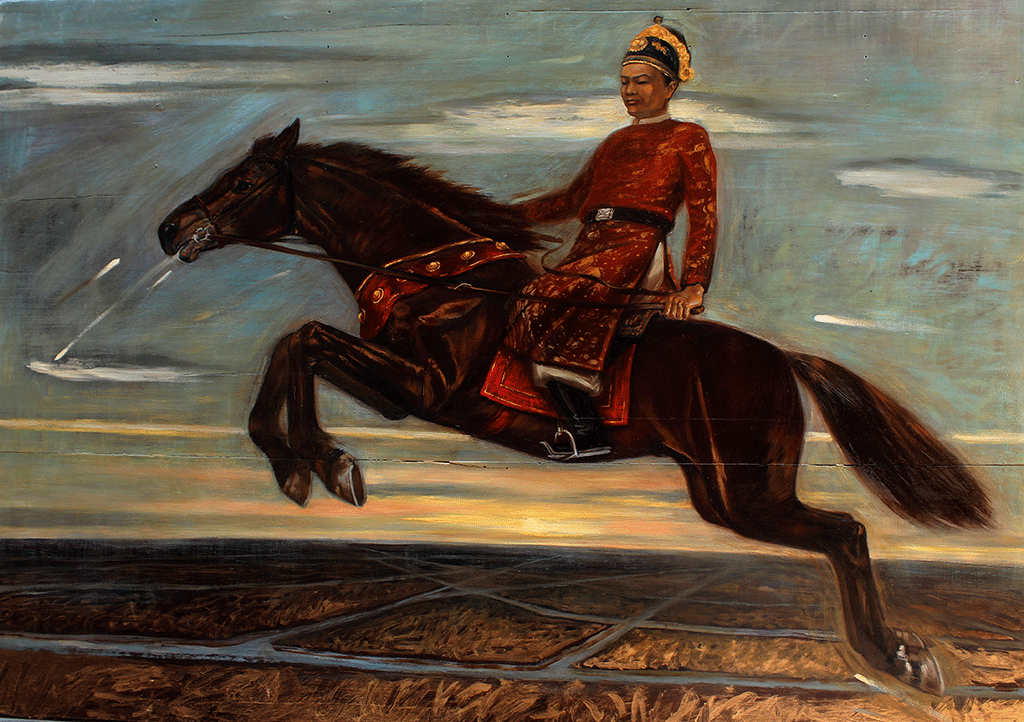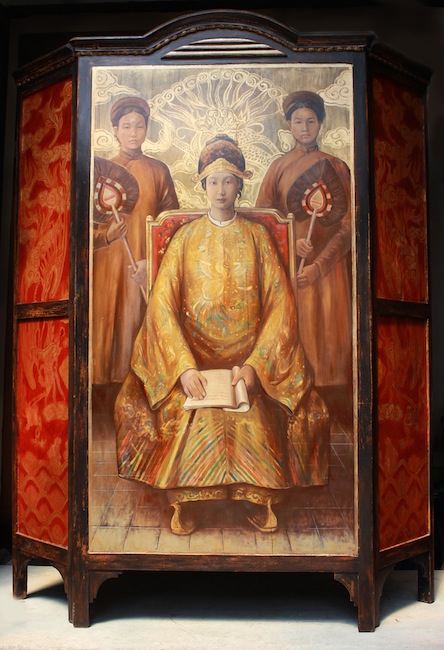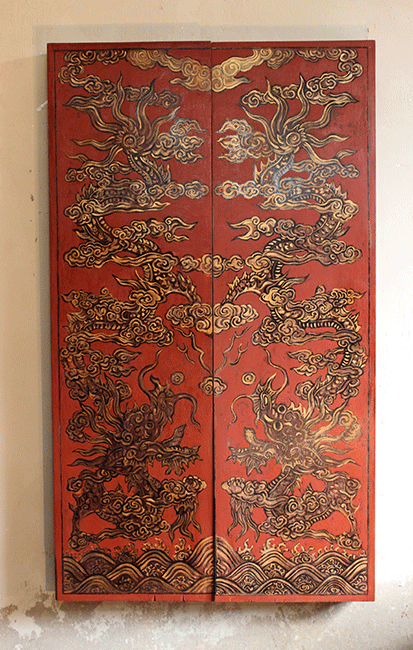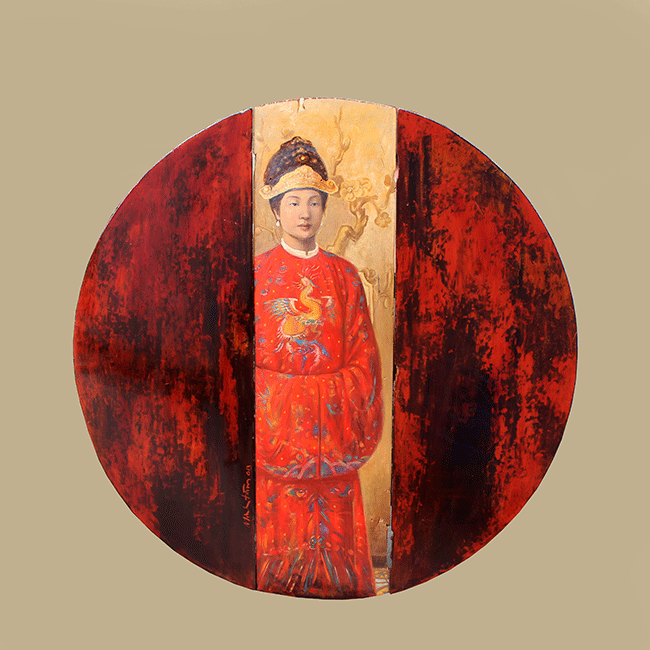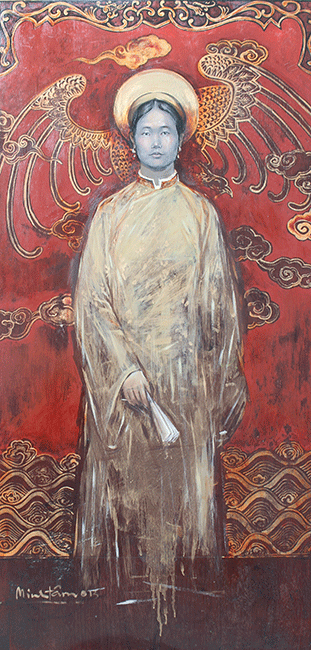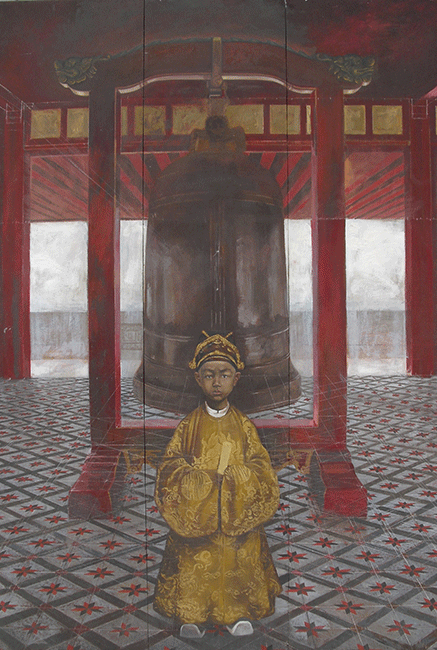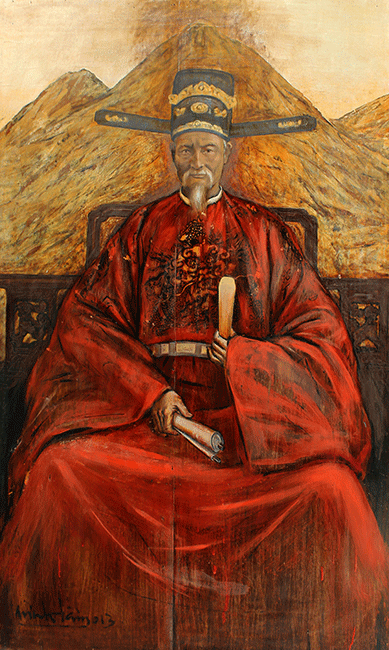House of Nguyen
Opening Reception: 6 December 2013, 6 - 9 pm
6 December 2013 - 3 January 2014
âWhen you try to do something you must be a king,â says Tran Minh Tam. His kingdom of a studio is a room full of old furniture, where he chooses what to do and how. âI like to work alone.â His declaration of independence crowns him as sovereign of all his artistic decisions.
The Nguyen dynasty shares its surname with about 40% of Vietnamese people. It was the dynasty that ruled over a country that had changed name considerable times…
âWhen you try to do something you must be a king,â says Tran Minh Tam. His kingdom of a studio is a room full of old furniture, where he chooses what to do and how. âI like to work alone.â His declaration of independence crowns him as sovereign of all his artistic decisions.
The Nguyen dynasty shares its surname with about 40% of Vietnamese people. It was the dynasty that ruled over a country that had changed name considerable times…
‘When you try to do something you must be a king,’ says Tran Minh Tam. His kingdom of a studio is a room full of old furniture, where he chooses what to do and how. ‘I like to work alone.’ His declaration of independence crowns him as sovereign of all his artistic decisions.
The Nguyen dynasty shares its surname with about 40% of Vietnamese people. It was the dynasty that ruled over a country that had changed name considerable times in the previous three thousand years. They united it and called it Vietnam.
Like the country’s names, Minh Tam’s art has made sudden changes. His previous series of paintings showed plastic bags full of water in impeccable hyperrealism. For the artist there is no incoherence in moving from one topic to a completely different one overnight. The Nguyen emperors could change wives whenever they felt like it. Tam’s eyes sparkle as he grins, ‘maybe I want to be a king.’
His interest in the Nguyen dynasty started some years ago, reading history online and in second hand books. Like the old books that got thrown out, so did old furniture. ‘In Saigon the old things are thrown away,’ Tam says, not needing to explain the drive to modernize and beautify that now rules this land. Tam uses the furniture as a support for his paintings, keeping together the mysteries of the past, the past of the old furniture and of the long-gone monarchs.
Tam paints portraits on old tabletops, cabinets, doors and screens. ‘I like beds too because we sleep in them,’ he smiles, ‘so many people slept there too and they told stories to their kids.’ The home units he gets were unwanted. The people who let the furniture go dismissed it as obsolete. Tam plays with that idea and works to render the pieces even more useless. His artworks are no longer utilitarian objects. Doors don’t open. Cabinets are like mausoleums.
Tam started to collect abandoned furniture in 2008. The magic of his first find made him want to nurture the object, preserve its invisible ancestry. It’s not uncommon to experience a connection with old or abandoned items. Questions about a mysterious found object thrill the imagination. ‘Some of the furniture could be as old as the Nguyen dynasty,’ the artist hopes.
Once restored and painted, the wooden pieces shine with beauty like the ancient capital of Hue in its former glory. Tam has obviously enjoyed painting the royals. Their silk brocades and elaborate headgear signal their status. Background imagery reinforces the symbolism. Decorative patterns or unshakeable mountains fan around the centrally positioned, hieratic kings, queens and mandarins.
The selection of sitters aims to be representative of the whole population. For this reason, Tam paints a number of women, second-class citizens at the time, often ignored by history’s records. During the Nguyen dynasty the legal rights of women were reduced, causing an ideological friction with earlier Vietnamese depictions of women: powerful, risk-taking and intelligent female figures, mythical and historical. Queen consort Nam Phuong is the most memorable woman from the Nguyen dynasty. Tam’s portrait of her is one of the best pieces in this exhibition. The book in her hands attests to her education, and her regal gaze dissuades us from noticing the manipulated shape of the cabinet.
The paintings are a made with both traditional Vietnamese lacquer and oil paint, an artistic medium introduced by the French. Tam reflects that it was during the Nguyen dynasty when Vietnamese met Westerners for the first time. ‘They learnt from each other,’ he says with no hint of bitterness towards the colonial troops that caused the fall of the last dynasty. Learning is obviously important for Tam, and the past is full of good and bad experiences, none of which it pays to ignore.
By Cristina Nualart
November, 2013
Read more
Read less

